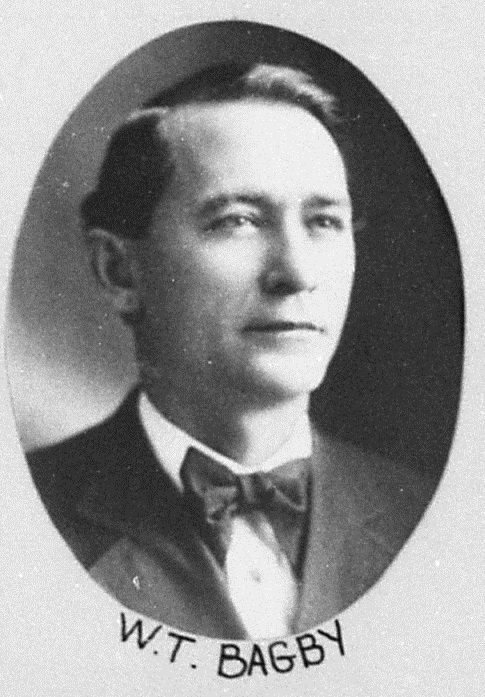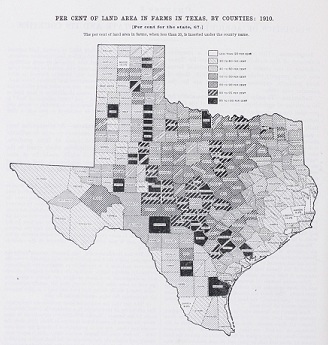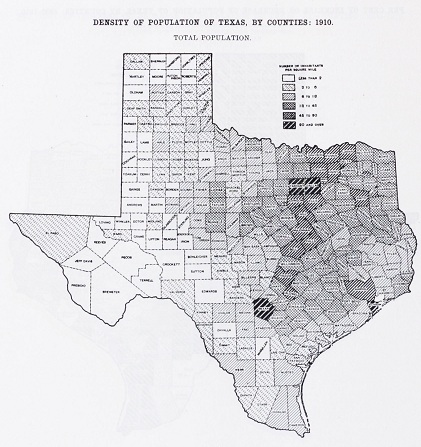- The Politics and Policies of the Medicaid Expansion. Kaiser Health News, February 15, 2013.
- Wogan, J.B. "Advancing the Debate: Political, Fiscal Costs of the Medicaid Expansion." Governing, February 11, 2013.
- "State Legislatures Debate Medicaid Expansion." Patient Protection and Affordable Care Act State Action Newsletter. National Conference of State Legislatures, February 8, 2013.
- Scott, Dylan. "States Send Warning to Feds with Medicaid Expansion 'Triggers'." Governing, February 5, 2013.
- Scott, Dylan. "Medicaid Expansion & States: Will They or Won’t They?" Governing, December 2012.
- Check out the latest Urban Mobility Report, with a new measure of travel reliability, the Planning Time Index. (Texas A&M Transportation Institute, February 5, 2013)
- Track state efforts to combat Medicaid fraud and waste. (MacArthur Foundation, February 6, 2013)
- Explore Medicaid spending and enrollment. (Kaiser Commission on Medicaid and the Uninsured, 2013)
- Examine state performance in election administration. (Pew Charitable Trusts, February 5, 2013)
Caring for Those Who Served
Feb 12
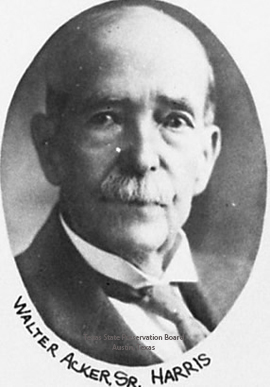 |
|
Walter Acker was the last Confederate veteran to serve in the Texas Legislature. (Photo courtesy of the State Preservation Board) |
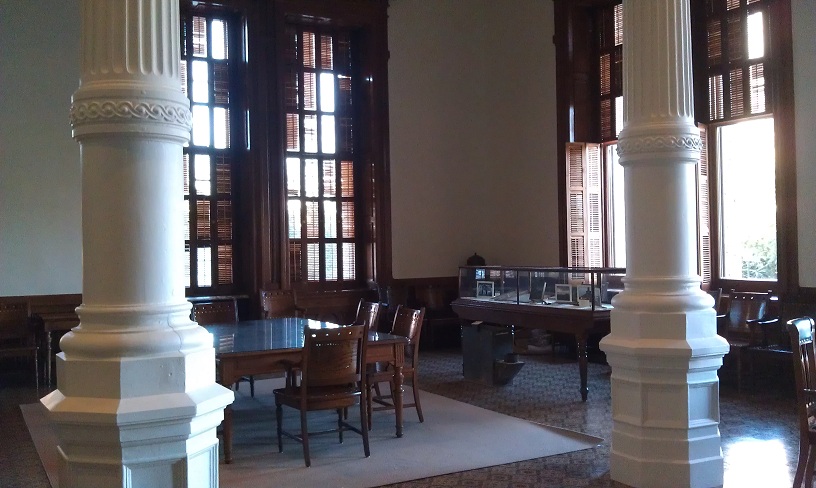 |
|
In 1913, the Texas Confederate Museum was located in the west wing of the Capitol, in what is now the Agricultural Museum/meeting room. |
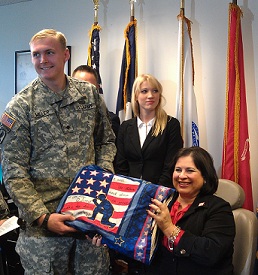 |
|
Sen. Leticia Van de Putte, chair of the Veterans Affairs and Military Installations Committee, presenting a Quilt of Valor to honoree SPC Cody Miller. |
 |
|
Sandra Smith, Adria Garcia, Cassaundra St. John, and Victoria Wegwert with the F7 Group, which works to empower female veterans and their families. |
| Photos by Amy Batheja except as noted. |
Second in a series of posts about the 33rd Legislature, held 100 years ago. Read the first post here.
One hundred years ago, the U.S. observed the fiftieth anniversary of the end of the Civil War. Many of those who fought in the war were still alive, and taking care of these aging veterans had been an ongoing issue since the end of the war.
Confederate Pensions
While Union Army veteran pensions were covered by the federal government, care of Confederate veterans was left up to individual states. In 1899, Texas began issuing pensions to indigent and disabled former Confederate soldiers. The pension rolls grew every year; in 1905 there were approximately 7,680 pensioners on the rolls, and by November of 1913 there were 14,980. The number of pensioners would reach 18,128 by the following year (1914). This increase was due, in part, to the expansion in 1912 of benefits to more recent residents of the state.
The law allowed for a distribution of $8.33 per month ($100/year). However, the law also allowed that if not enough money was available, the veterans would receive a pro rata amount of what was available. Although the legislature allotted $500,000 each year to the fund, it was not enough; pensioners received just $42 for the entire year ending in 1913.
The situation improved when Texas voters passed a constitutional amendment in 1912 approving an ad valorem tax that would specifically go toward funding Confederate pensions. In 1917, for example, pensioners received $22 in one quarter (approx. $88/year). The tax was repealed in 1979, and language about the pension fund was removed from the Constitution in 1999, as part of a clean-up of "duplicative, executed, obsolete, archaic, and ineffective provisions."
- Confederate Homes for Men and Women housed those unable to care for themselves; read more about the men's home and the women's home in the Handbook of Texas Online.
- For more information about the full history of pension amounts, visit this link at the Texas State Library and Archives Commission.
- Search the online index of pension applications: https://www.tsl.state.tx.us/apps/arc/pensions/
Caring for Veterans in 2013
During this session, legislators have introduced a number of bills and resolutions regarding veterans. Many of them are related to taxes, especially the homestead property tax exemption amendment passed in 2011. View them all by searching TLO; set the bill type to "all" and search by subjects "Military & Veterans (I0535)" and "Resolutions - Constitutional Amendments (I0661)."
Other bills include:
- facilitating the occupational licensing of veterans and their spouses (SB 162 by Senator Leticia Van de Putte and HB 45 by Representative Dan Flynn; SB 242 by Senator John Carona; HB 757 by Representative Joe Pickett)
- adding disabled veterans to the list of business owners who may be certified as having a historically underutilized business (SB 116 by Senator Juan Hinojosa and HB 194 by Representatives Joe Farias and Bennett Ratliff)
- establishing veteran resource centers at state colleges and universities (HB 171 by Representative Roberto Alonzo)
- granting leave to new veterans who are employed by the state so they may tend to matters related to civilian reintegration (SB 442 by Senator Brian Birdwell)
Since 2007, legislators have honored wounded veterans during a Wounded Warrior day (SR 68 by Senator Leticia Van de Putte) at the Capitol. Recently, six veterans were honored on the floor of the Senate, including Senator Brian Birdwell, a retired U.S. Army officer who was wounded in the September 11, 2001, attack on the Pentagon.
To view all veteran-related bills that have been filed during the 83rd Regular Session, visit Texas Legislature Online and search directly under the subject Military & Veterans (I0535).
Did You Know?
There are many monuments on the Capitol grounds honoring veterans, but the newest monument will have its groundbreaking on March 25, 2013. The Vietnam Veterans Memorial will be located on the northeast side of the Capitol, near the Peace Officers Memorial, and will be dedicated this fall. Click here to learn more about the groundbreaking and see 3-D renderings of the monument.
- Examine a 50-state survey of Medicaid and CHIP eligibility and enrollment data. (Kaiser Commission on Medicaid and the Uninsured, January 2013)
- See how Americans value postsecondary educational attainment. (Lumina Foundation, February 5, 2013)
- Consider how the environment affects children's health. (U.S. Environmental Protection Agency, January 2013)
- Map economic data down to the neighborhood level. (Rich Blocks, Poor Blocks, 2013)
- Explore America's economy via mobile app. (U.S. Census Bureau, accessed February 6, 2013)
- HB 4 by Representative Allan Ritter. Relating to the creation and funding of the state water implementation fund for Texas to assist the Texas Water Development Board in the funding of certain water-related projects.
- HB 11 by Representative Allan Ritter. Relating to the appropriation of money from the economic stabilization fund to finance certain water-related projects.
- HB 227 by Representatives Lyle Larson and Paul Workman. Relating to the appropriation of money from the economic stabilization fund to be used for the purposes of the water infrastructure fund during the next state fiscal biennium.
- SB 4 by Senator Troy Fraser. Relating to the administration and functions of the Texas Water Development Board.
- SB 22 by Senator Troy Fraser. Relating to the administration of the Texas Water Development Board; making an appropriation from the economic stabilization fund to finance certain water-related projects.
- SB 224 by Senator Kel Seliger. Relating to the availability of money from the economic stabilization fund to be used for the purposes of projects in the state water plan.
- SB 235 by Senator Troy Fraser. Relating to the creation of regional authorities for water infrastructure projects.
Week in Review, January 31st
Jan 31
- Check out the State of the States 2013. (Pew Center on the States, January 2013)
- Consider proposed state legislation related to employer access to social media usernames and passwords. (National Conference of State Legislatures, January 21, 2013)
- Explore tobacco control. (Centers for Disease Control and Prevention, January 24, 2013)
- Read about REAL ID phased-in compliance by the fall of 2013. (National Conference of State Legislatures, December 21, 2012)
Week in Review, January 24th
Jan 24
- See state-by-state employment changes over the past year. (Bureau of Labor Statistics, January 22, 2013)
- Consider the current retirement age and how it came to be 65. (Origins, February 2013)
- Check out a chart of the 113th Congress. (Businessweek, January 10, 2013)
- Follow the latest developments in public health law. (CDC Public Health Law News, January 17, 2013)
- "Top officials tout drug testing for welfare, unemployment applicants," Austin American-Statesman, November 13, 2012.
- "Texas plan to drug-test jobless seeking aid stirs debate," Houston Chronicle, November 23, 2012.
Week in Review, January 17th
Jan 17
- Explore the most recent economic outlook data for Texas. (Texas Comptroller of Public Accounts, January 4, 2013)
- Examine education statistics and projections through 2021. (National Center for Education Statistics, January 2013)
- Read about balancing cost and quality in the health care system. (The Commonwealth Fund, January 10, 2013)
- See how many people rely on health information they find on the Internet. (Pew Research Center, January 15, 2013)
- Track transportation funding information in Texas. (Texas A&M Transportation Institute / Texas Department of Transportation, accessed January 2013)
- Examine gun violence in urban areas. (The Atlantic, Cities, January 10, 2013)
One hundred years ago, Texas legislators convened in January 1913 for the 33rd Legislative Session. While Texas was in some ways a very different state than it is today, many of the issues the legislators faced have a familiar ring: school funding, veteran care, drought and water rights, the border with Mexico, women's rights, and hazing at universities. Over the next few months, we'll take a look at these issues and how legislators one hundred years ago addressed them.
For our first post, let's take a broad look at what was happening in the U.S.. and in Texas in 1913...
In the U.S.. and the World
- The Progressive Era was in full swing. Democrat Woodrow Wilson was elected president in 1912; the party platform focused on states’ rights and individual freedom, and called for environmental conservation, banking and currency reform, and abolition of monopolies.
- The majority of Americans (54%) still lived in rural areas, but the percentage was quickly changing. In 1920, the percentage of urban dwellers would cross 50% for the first time.
- World War I would begin in Europe the following year, though the U.S. would not enter the war until 1917.
- Two new constitutional amendments went into effect in 1913: the establishment of a federal income tax (16th amendment) and the direct election of senators (17th amendment).
- Though Prohibition would not begin until 1919, various states had passed bans on liquor and the Texas legislature would take up the issue during the 33rd session.
- The Mexican Revolution had begun in 1910. La Decena Tragica, the Ten Tragic Days, occurred in February of 1913, culminating with the murder of President Madero, who had led the revolution, and a coup d’etat by General Victoriano Huerta.
In Texas
- Texas had become a state 67 years prior. To the people of 1913, statehood was as far away as the end of World War II is for us today.
- Governor Oscar Branch Colquitt, inaugurated two years prior in 1911, would serve as governor until 1915. The Handbook of Texas notes that he "was one of the most effective stump speakers in the history of Texas."
- In 1909, Texas was the largest producer of cottonseed oil in the nation, with 21% of all production. The slaughterhouse industry was also on the rise; the 1910 census noted that "There were 242,174, or 84.9 per cent, more beeves slaughtered in 1909 than in 1904." (Beeves was a term for cow or steer - where the UT mascot name Bevo originates!)
- The oil boom was in its infancy; oil had been discovered at Spindletop just 12 years prior.
- The present state capitol building had been dedicated 25 years earlier, in 1888.
- In the spring of 1913, Sam Rayburn was sworn in as U.S. Congressman. He would go on to become the longest-serving Speaker of the House, serving 17 years under four presidents.
| 1910 | 2010 | |
| Total population | 3.9 million | 25.1 million |
| Pop. density | 14.8 per sq. mile | 96.3 per sq. mile |
| % of pop. under 25 | 49% | 38% |
| % of pop. in urban areas | 24% | 86% |
- Session laws from the 33rd Regular Session and the 33rd First Called Session
- Vetoes by Governor Colquitt for the 33rd Regular Session and the 33rd First Called Session
- Search legislative reports and committee charges by subject, keyword, committee name, legislative session, and chamber.
- Department of Commerce and Labor, Bureau of the Census. Thirteenth Census of the United States Taken in the Year 1910: Abstract of the Census. Washington: Government Printing Office, 1913. Call number: 317.3 UN3 1910
- Department of Commerce and Labor, Bureau of the Census. Thirteenth Census of the United States Taken in the Year 1910: Abstract of the Census with supplement for Texas. Washington: Government Printing Office, 1913. Call number: 317.3 UN3 1910T
- Humphrey, R. B. Texas liquor laws. Austin: Southern Law Book Publishers, 1915. Call number: 351.761 H88T
- Potts, C.S. “Some Practical Problems of Prison Reform,” in Bulletin of the University of Texas, No. 162, Humanistic Series No. 10. Austin: University of Texas Press, December 8, 1910. Call number: Z UA200.7 B874I 1882-1942
- Tarde, Gabriel de, and Repelje Howell, trans. Penal Philosophy. Boston: Little, Brown, and Company, 1912. Call number: 343.2 T172
- Whisenhunt, Donald W. “Texas in the Progressive Era, 1900-1930,” in Texas: A Sesquicentennial Celebration. Austin: Eakin Press, 1984. Call number: 976.4 W578T
- White, E.V. and E.E. Davis. “A study of rural schools in Texas,” in Bulletin of the University of Texas, No. 364, Extension Series No. 62. Austin: University of Texas Press, October 10, 1914. Call number: Z UA200.7 B874 364
- Yoakum, Clarence Stone. “Care of the Feeble-Minded and Insane in Texas,” in Bulletin of the University of Texas, No. 369, Humanistic Series No. 16. Austin: University of Texas Press, November 5, 1914. Call number: Z UA200.7 B874 369

